The Queen’s Indian Defense is an opening choice for Black players who want a solid and stable opening against the queen’s pawn opening (1. d4).
The Queen’s Indian centers around the hypermodern theory of openings where Black develops their minor pieces (knights and bishops) early and use them to control squares, rather than going by the popular opening principles that hover around using pawns to control the central squares.
The Queen’s Indian Defense starts with the moves: 1. d4 Nf6 2. c4 e6 3. Nf3 b6.
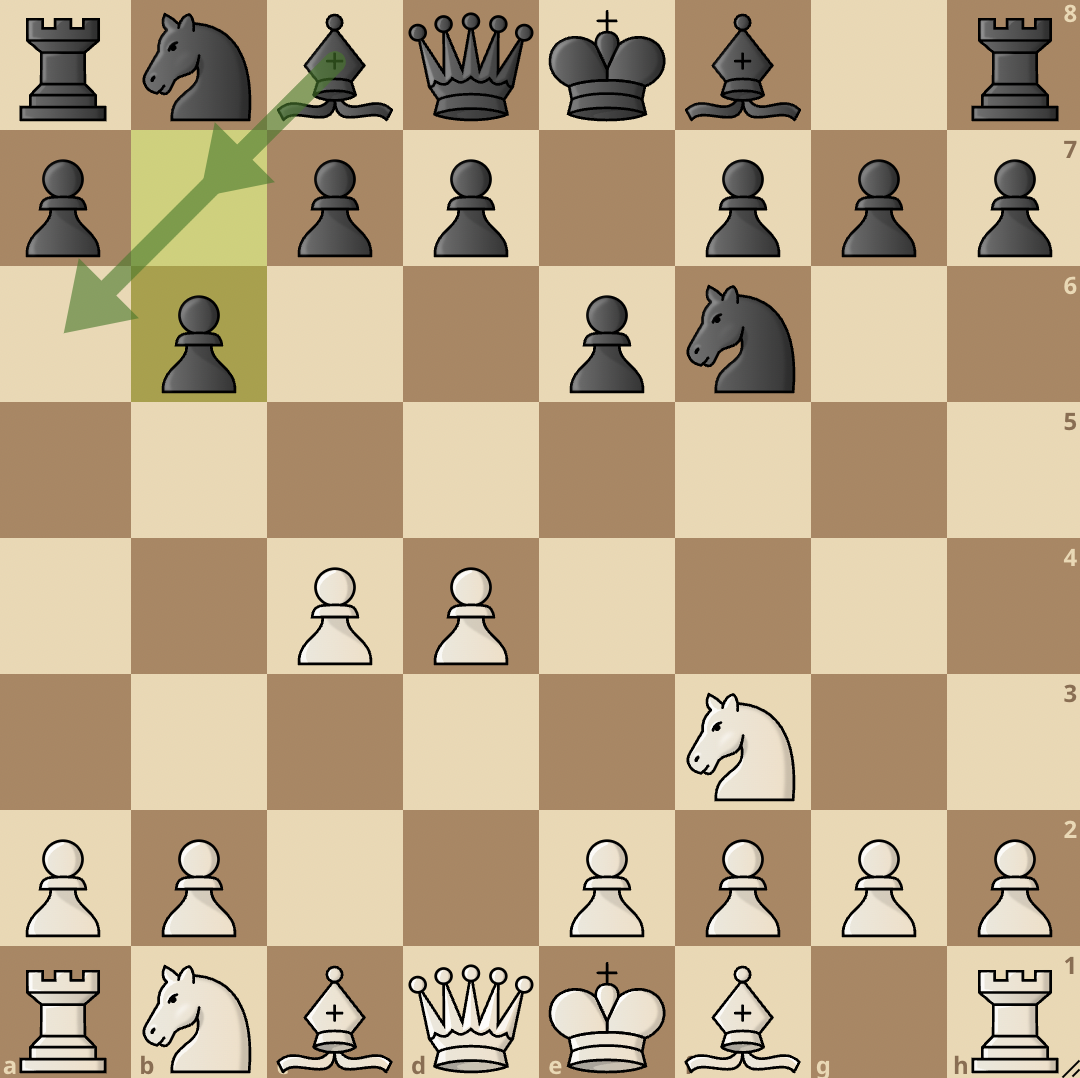
Black starts by developing the knight first, playing …e6 in response to White’s c4, and then after White develops their knight to f3, Black plays the move that signifies the start of the Queen’s Indian, …b6.
Black’s starting moves go in line with hypermodern principles. They do not immediately try to occupy the center with pawns, rather, their immediate focus is on piece development.
By playing …b6, Black is preparing to fianchetto their light-squared bishop and contest the long diagonal, they may also play Ba6 and put pressure on White’s c-pawn in some lines.
The Queen’s Indian Defense has a number of variations. However, we will take a look at the main ones and how they occur.
The main variations of the Queen’s Indian are:
- Fianchetto Nimzowitsch Variation
- Fianchetto Traditional line
- Kasparov Variation
- Spassky System
- Petrosian Variation
Fianchetto Nimzowitsch Variation
1. d4 Nf6 2. c4 e6 3. Nf3 b6 4. g3 Ba6

The Fianchetto Nimzowitsch variation is the most popular line of the Queen’s Indian in our modern day. It starts after 3…b6 by Black. White then replies with 4. g3.
White’s idea here is to fight for the light-squared diagonal by fianchettoing their bishop to g2 and using it as a means to control the light-squared diagonal.
From here Black will reply with 4…Ba6.
…Ba6 comes with the threat of capturing the c4 pawn. Black sees that White intends to fianchetto their light-squared bishop, so they immediately launch an attack on the c-pawn.
The best way for White to protect that pawn is to play 5. b3. Trying to defend with the bishop on f1 by opening that diagonal kind of invalidates the idea of g3 which should ensure the bishop’s active placement on g2.
Black continues with 5…Bb4+ and White defends with 6. Bd2. Black now retreats with 6…Be7, as exchanging the bishops does no good for Black, so retreating is the best…plus White has to move the dark-squared bishop again.
White now continues with their plan and they fianchetto their bishop with 7. Bg2. Black plays 7…c6, solidifying their hold over the d5 square. c6 also protects the a8 rook from any potential danger posed by the bishop on g2.
From here, the position is very solid for Black and the situation on the board is a calm one.
Fianchetto Traditional line
1. d4 Nf6 2. c4 e6 3. Nf3 b6 4. g3 Bb7

The Fianchetto Traditional line used to be the go-to line for players in the Queen’s Indian Defense. However, in modern times, the Nimzowitsch variation is the preferred line.
The Traditional line starts after 4. g3 by White, Black now plays 4…Bb7 and prepares to counter White’s fianchettoed bishop.
White continues with their plan and they play 5. Bg2, both sides now have their light-squared bishops fianchettoed. Black plays 5…Be7 and both sides castle with 6. 0-0 0-0.
From here, White will continue with Nc3, aiming to create an avenue for e4 to be played, they’ll also try to play d5 and neutralize the light-squared bishop on b7, while Black will look to start attacking the pawn structure in the center with breaks like c5.
Kasparov Variation
1. d4 Nf6 2. c4 e6 3. Nf3 b6 4. Nc3
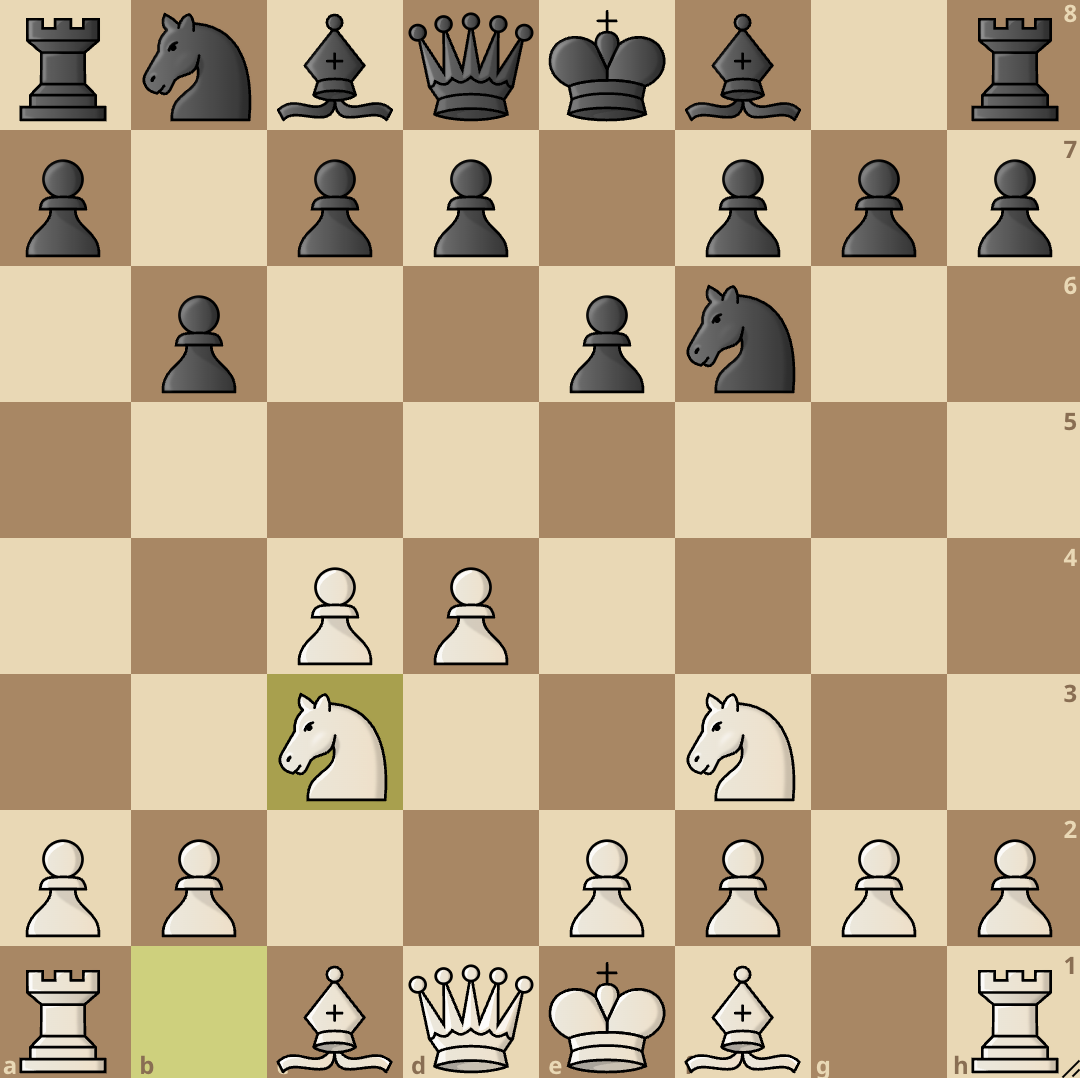
The Kasparov variation starts with 4. Nc3. This variation can easily transpose into the Nimzo-Indian Defense if Black plays …Bb4.
This variation was a favorite of former world champion, Garry Kasparov. The Kasparov variation usually leads to a drawish position with both sides maintaining a solid position and no evident weaknesses.
Spassky System
1. d4 Nf6 2. c4 e6 3. Nf3 b6 4. e3
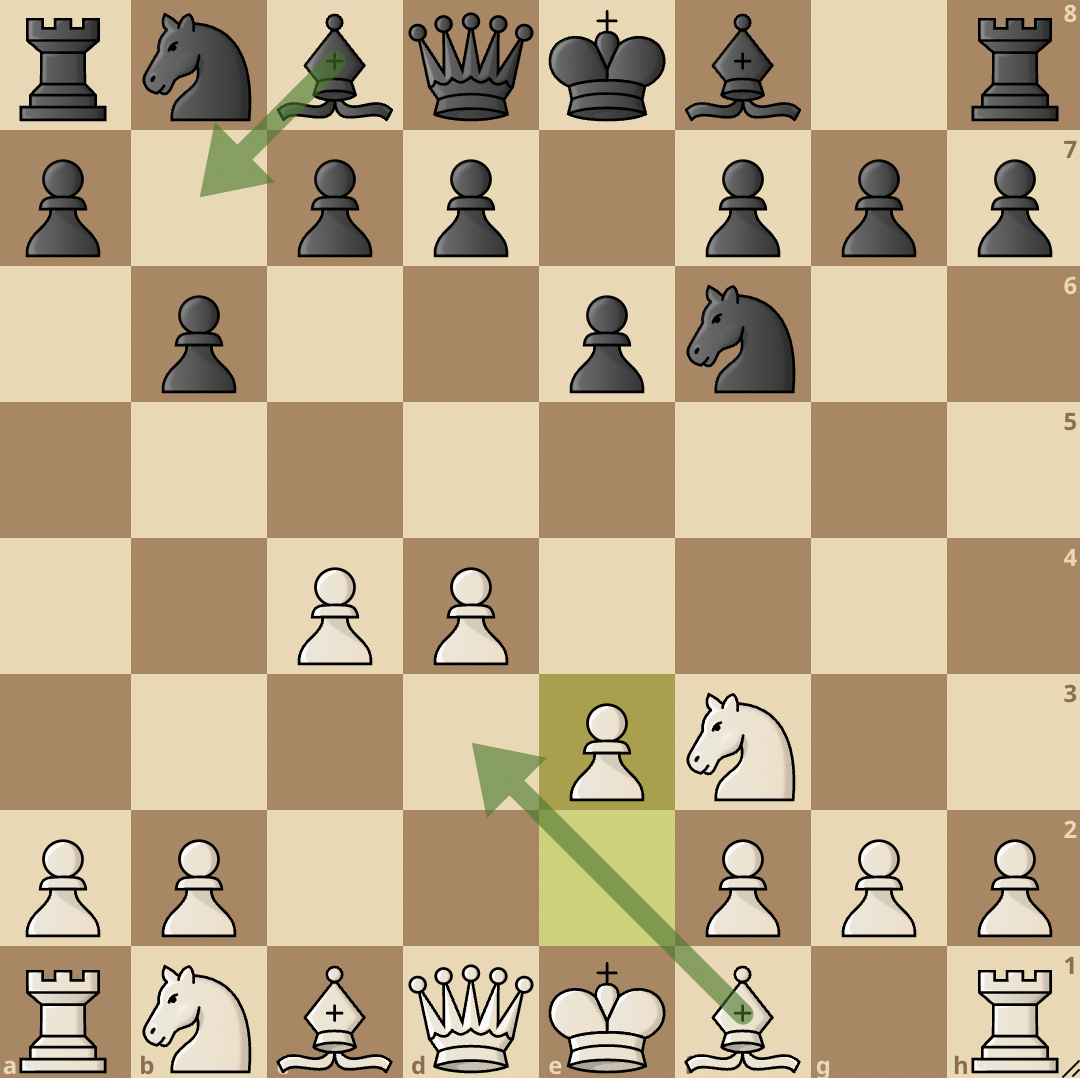
4. e3 is a variation that leads to the Spassky System. In this variation, White eliminates the possibility of Black playing …Ba6 and attacking the c4 pawn.
This is because by playing e3, White is already protecting the c4 pawn with their light-squared bishop on f1.
Black will continue with 4…Bb7, and White will play 5. Bd3, developing their bishop and preparing to castle.
Black now decides it’s time to strike in the center and they play 5…d5. White then castles with 6. 0-0 and Black also prepares to castle with 6…Bd6. White develops a piece with 7. Nc3 and Black castles with 7…0-0.

The position here is solid for both sides and no side currently has the upper hand.
The positions that will arise will be closed ones and both players would need to maneuver their pieces well to have any chance of gaining an advantage over the other.
Petrosian Variation
1. d4 Nf6 2. c4 e6 3. Nf3 b6 4. a3

The Petrosian Variation that starts with 4. a3 is a common reply to the Queen’s Indian Defense.
By playing 4. a3, White makes sure Black cannot play …Bb4 and pin down their knight when it comes to c3.
The variation continues with Black fianchettoing their bishop with 4…Bb7. White now plays 5. Nc3 and Black strikes in the center with 5…d5. White will exchange pawns in the center with 6. cxd5 and Black will reply with 6…Nxd5.
White now plays 7. Qc2 and this move looks to prepare an e4 thrust. After Qc2, Black will trade knights with 7…Nxc3. White will recapture with 8. bxc3 and after Black plays 8…Be7 to prepare castling, White finally executes 9. e4.
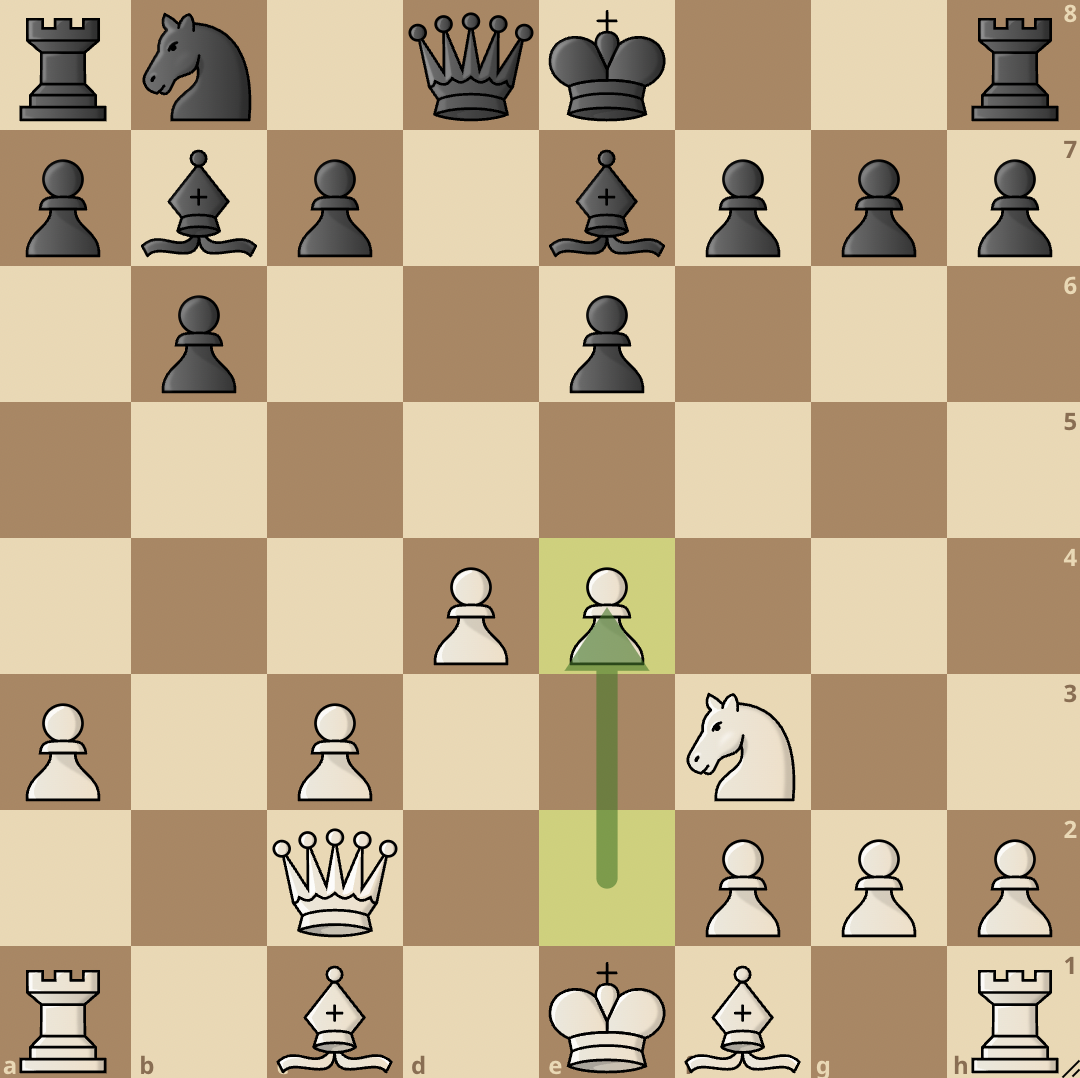
In the Petrosian variation, White gets massive center control while Black retains a solid position.
Successful Deployments
Touch the moves or move the board around for a better interactive experience.
Boris Gelfand v Garry Kasparov, Novgorod (1997)
The 1997 game between Boris Gelfand and Garry Kasparov was a very exciting one. Garry was at the peak of his powers then and he won an excellent game in the Queen’s Indian Defense against Gelfand who was also a very strong grandmaster.
Boris Alterman vs Anatoly Karpov, 11th ECC qual. group 2 (1995)
Every player who wants to master the Queen’s Indian Defense has to study the games of former world champion, Anatoly Karpov. Karpov is regarded as the strongest Queen’s Indian player. In his 1995 game against Boris Alterman, he showed just why he is regarded as a master of the opening by winning a very nice game against his opponent.
Garry Kasparov v Alexander Ivanov, 15th Soviet Team-ch lower group (1981)
Garry Kasparov was a very strong Queen’s Indian player, but he also knew how to play against it. In this game against Alexander Ivanov, he employed the Petrosian variation and won a very nice game.





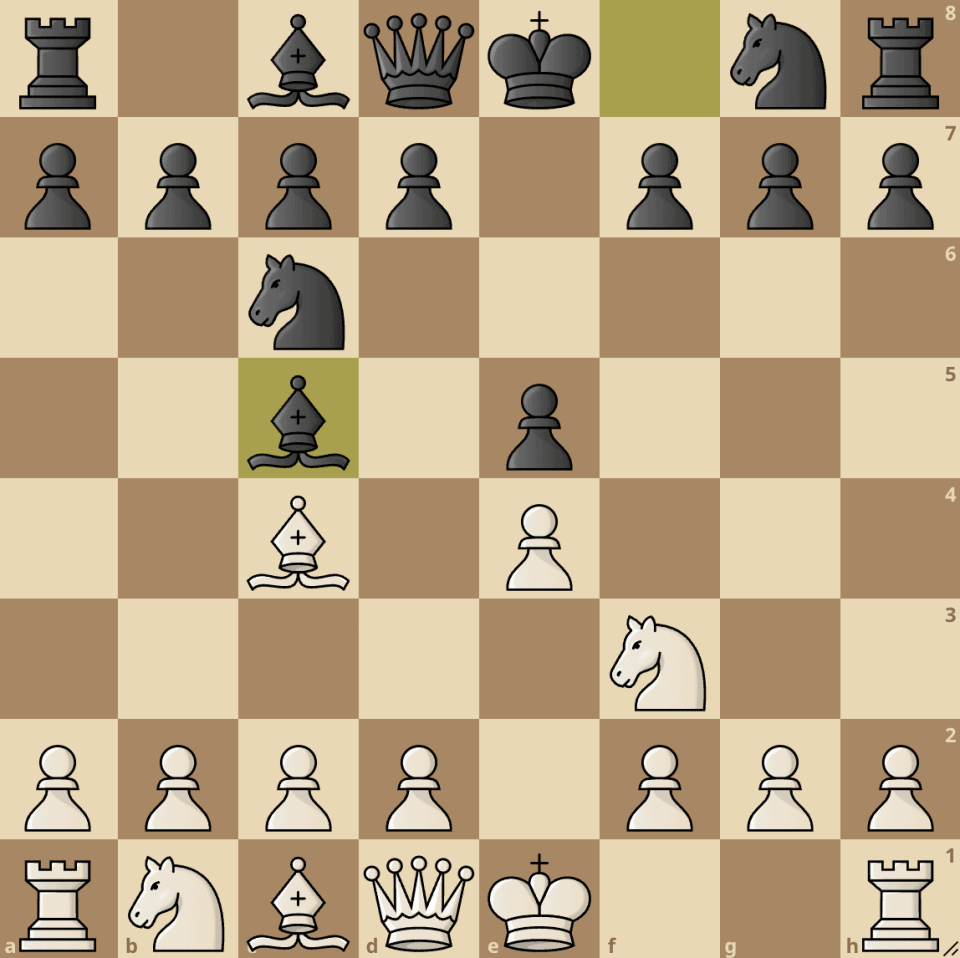

join the conversation